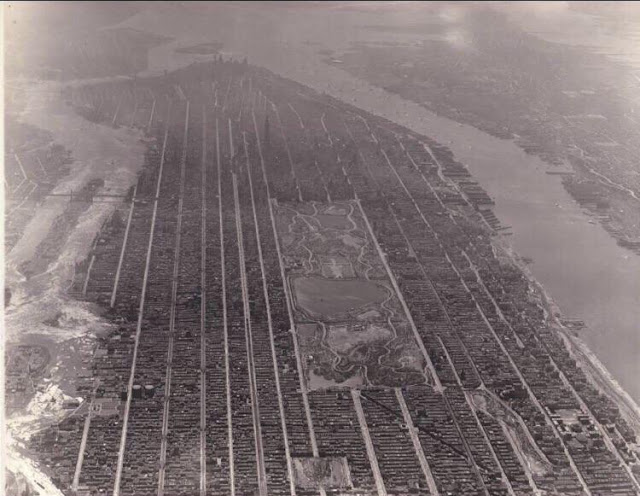Sunday, 15 May 2022
Monday, 9 May 2022
HINDENBURG LINE (GERMANY)
HINDENBURG, PAUL VON (1847–1934) German field marshal. President of the Weimar Republic, 1925–1934. He served as a young officer in the Seven Weeks’ War (1866), during which he was wounded at Königgrätz. He served again in the Franco–Prussian War (1870–1871). He joined the General Staff, serving first under the famed Helmuth von Moltke and then under Alfred von Schlieffen. Hindenburg retired in 1911 but was recalled upon the outbreak of World War I and the unexpected early Russian success in East Prussia.
Along with Erich von Ludendorff, he won great victories over Russia at Tannenberg and the Masurian Lakes in 1914. He was made commander in the east on November 1, 1914, and won again at Gorlice-Tarnow in 1915. He became chief of the General Staff in 1916, replacing Erich von Falkenhayn after the Russian “Brusilov offensive.” To break the stalemate on the Western Front, he hoped to defeat Great Britain at sea before the United States entered the war in strength. To do so, he approved the resumption of the strategy of unrestricted submarine warfare in January 1917.
Upon the collapse of Russian resistance and German victory on the Eastern Front in 1917, Hindenburg and Ludendorff imposed the diktat of the Treaty of Brest-Litovsk on the Bolsheviks in March 1918. They turned to complete the supreme German effort in the west later that spring. When the Reichswehr was defeated in the fall of 1918, Hindenburg and Ludendorff advised the civilians in Berlin to ask for terms. Hindenburg retired from the Army in 1919. He stood for election as president of the Weimar Republic in 1925.
He served Germany’s young and greatly fragile democracy reluctantly, badly, and with deep contempt for its political class and republican values: he remained an unreconstructed monarchist to his last days. He defeated Adolf Hitler in the presidential election of 1932 but agreed to appoint the Nazi Party leader chancellor of Germany in January 1933. Hindenburg may have been senile at the end of his life.
He certainly underestimated Hitler, whom he infamously and prematurely dismissed as a mere “Bohemian corporal.” Hindenburg’s remains—and the victory banners captured from Russians during World War I—were interred in a great tomb and war memorial at Tannenberg. His body was hastily removed to Hamburg, and his tomb was blown up by the Wehrmacht, just before the site was overrun by the Red Army in 1945. Hindenburg was reburied at Schloss Hohenzollern, seat of the defunct Prussian and imperial dynasty.
Ambracia and Amphilochia
The Ambracian Gulf, near the mouth of which the battle of Actium was fought in 31, separates Acarnania to the south from Epirus to the north. At its eastern end was a mountainous area known as Amphilochia, with its largest city, Amphilochian Argos, near the eastern end of the gulf. Ambracia was a city dominating a large plain north of the gulf. Ambracia was a Corinthian colony and remained close to its mother city. In 480, it joined the fight against the Persians, sending seven ships to Salamis and 500 men to Plataea.
The Amphilochians, on the other hand, were considered non-Greek in origin. According to Thucydides, sometimes perhaps around 440, the people of Amphilochian Argos accepted Ambraciot settlers and the city became Hellenized. In Thucydides’ own day, the historian tells us, the people of Argos spoke Greek while the rest of the Amphilochians were still non-Greek speakers. But the new settlers took over the town, and the Amphilochians brought in Acarnanian and Athenian help. The Athenian Phormio arrived with 30 ships, took the town, and enslaved the Ambraciot settlers. The town was now repopulated with Amphilochians and Acarnanians.
The Second Peloponnesian War was a period of further conflict. Ambracia supported Corinth against Corcyra and consistently supported Sparta during the war. In 430, the Ambraciots, with help from unspecified barbarians, tried but failed to take Argos. In winter 426/5, the Ambraciots arranged with a Spartan commander, Eurylochus, to make a joint attack on Argos, to get rid of Acarnanian and Athenian influence in the area altogether. For their part, the Amphilochians called in Athenian help, and the Athenians arrived with 20 ships and 600 Messenian hoplites from Naupactus. The Athenian general Demosthenes took command of the Amphilochians and their allies.
The resulting battle of Olpae ended disastrously for the Spartans and Ambraciots, and Eurylochus was killed. Demosthenes then surprised and destroyed a relief force sent out from Ambracia. Thucydides comments that Ambracia had suffered the greatest disaster over a few days of any city in the war. Wary of the Athenians obtaining a foothold in the area, the Acarnanians and Amphilochians refrained from capturing Ambracia, and the three parties agreed to a 100-year defensive alliance. The sequence of events is a good example of the sort of local disasters that the conflict of the great powers, Athens and Sparta, inflicted on many parts of Greece.
Ambracia remained loyal to Corinth in the Corinthian War. In the third century, the area came under the rule of Pyrrhus, king of Epirus, and he made Ambracia his capital. From about 229 to 167, it was part of the Aetolian League, before coming under Roman rule. After the battle of Actium, fought near the mouth of the Ambracian Gulf in 31, Ambracia helped provide the population of Augustus’ new foundation, Nicopolis, which became the dominant city in the area.













